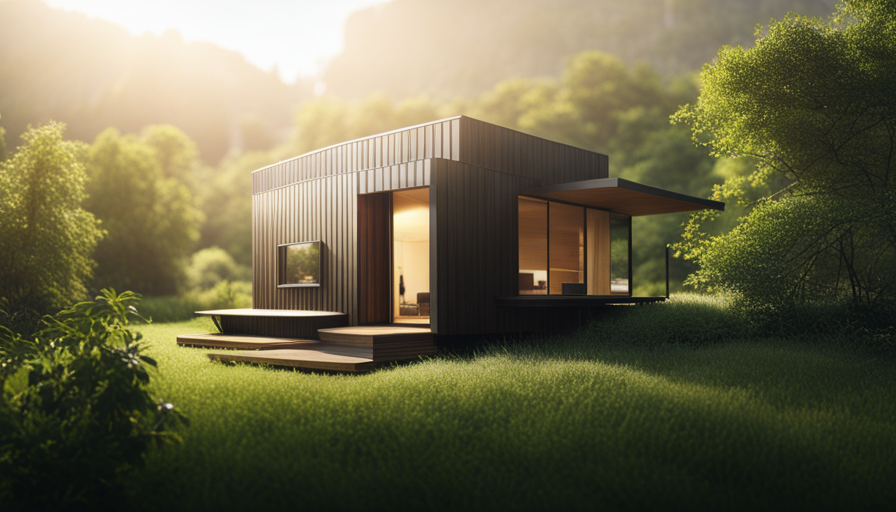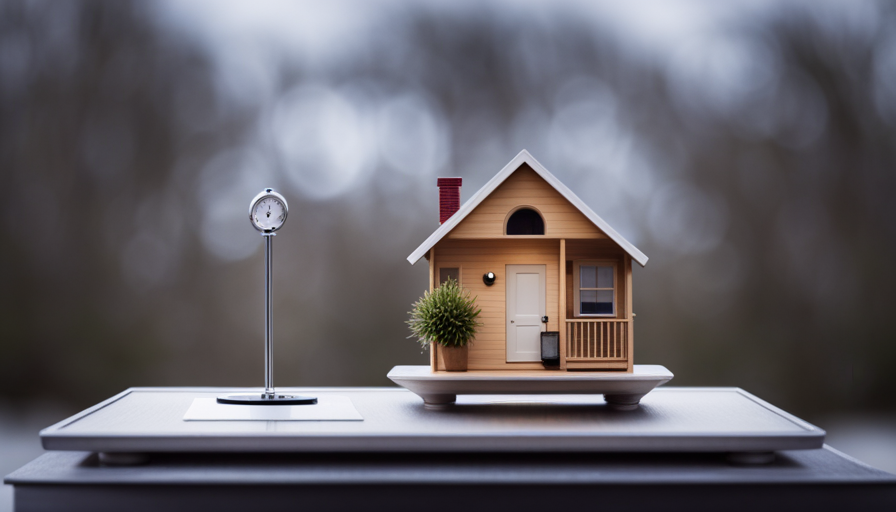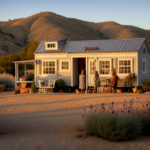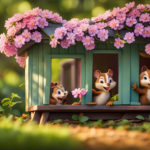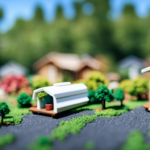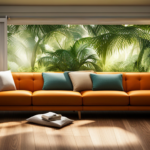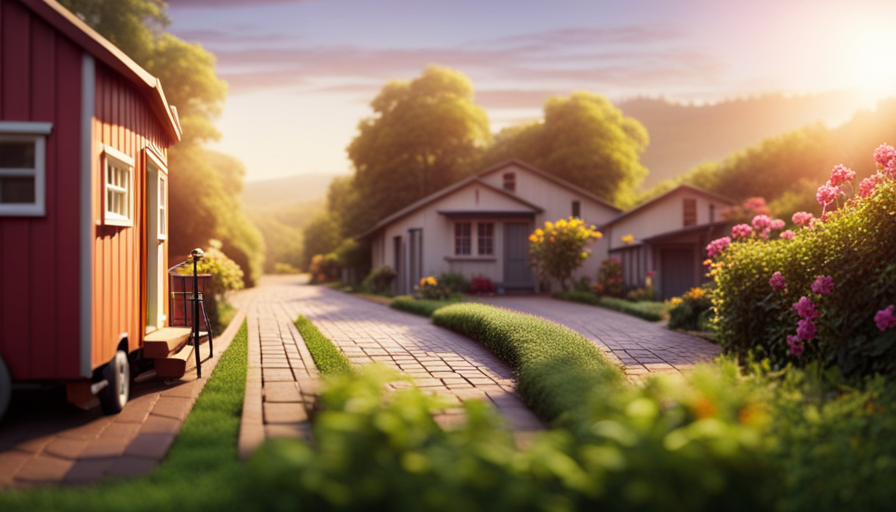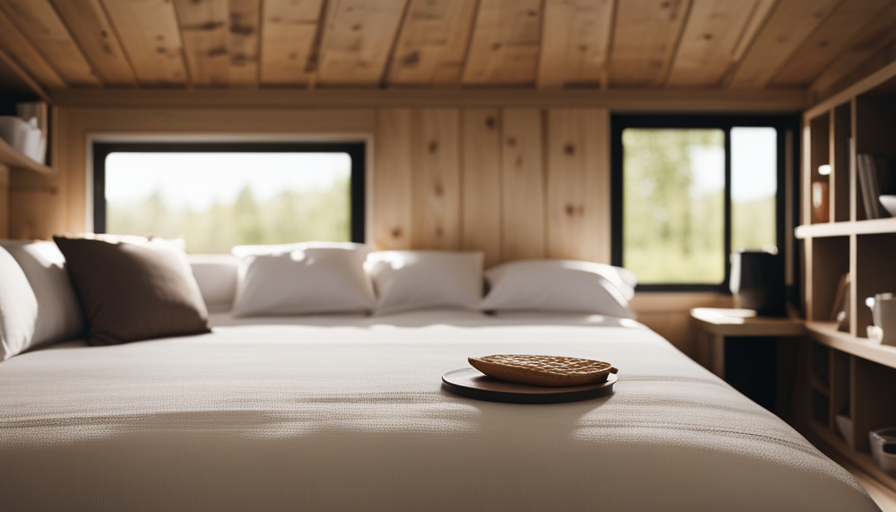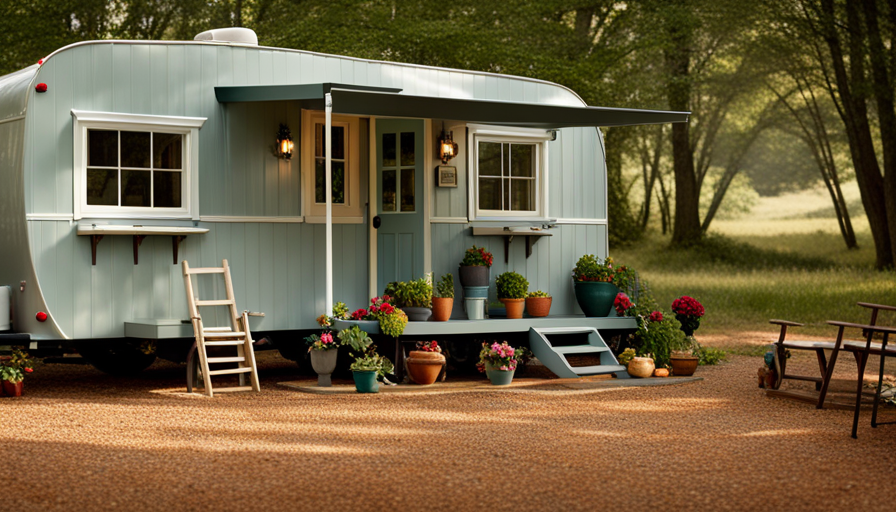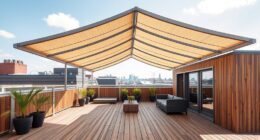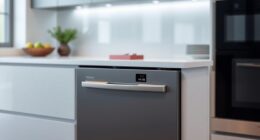Oh, the marvels of living in a tiny house! Just when you believe you’ve experienced everything, an episode from ‘Tiny House Big Living’ emerges and completely revolutionizes the concept of small-scale living, or perhaps more accurately, takes it vertical! Indeed, prepare yourselves, my friends, for an unparalleled episode where the house is not just diminutive in size but also rises high, challenging the conventional norms of living on a single plane.
In this groundbreaking episode, we delve into the world of vertical tiny homes, where innovative design and unique features come together to create a living space that reaches for the sky. From exploring the vertical layout and discovering its limitless possibilities to uncovering the secrets of sustainable living in a small footprint, this episode promises to inspire and captivate even the most skeptical of viewers.
So join me as we embark on this vertical adventure, exploring the pros and cons of the vertical living lifestyle and uncovering practical tips and tricks that will leave you in awe of what can be achieved within the confines of a tiny, yet towering, home.
Get ready to have your perceptions turned on their head and your imagination ignited as we discover the untapped potential of living vertically in a tiny house.
Key Takeaways
- The vertical layout of the house in the episode offers continuity and fluidity, creating a unique and visually appealing aesthetic.
- The staircase in the house doubles as a bookshelf, showcasing innovative and space-saving solutions.
- The episode highlights the use of lofted sleeping areas and multi-functional furniture, maximizing limited space and optimizing functionality without sacrificing style.
- The vertical tiny home design featured in the episode offers valuable insights and inspiration for maximizing space in small living areas, with a focus on storage solutions and energy efficiency.
Unique Design and Innovative Features
The vertical tiny house boasts a plethora of unique design elements and innovative features that set it apart from traditional tiny homes. With its vertical living advantages, this house maximizes space in a way that is both practical and visually striking.
One of the key advantages of vertical living is the efficient use of vertical space, allowing for multiple levels and creating a sense of openness. The house incorporates space-saving solutions such as built-in storage compartments and foldable furniture, making every inch count.
The innovative design also includes a staircase that doubles as a bookshelf, adding both functionality and aesthetic appeal. Exploring the vertical layout reveals a seamless flow between different levels, creating a sense of continuity and fluidity throughout the house.
This unique and innovative approach to tiny house design truly sets it apart from the rest.
Exploring the Vertical Layout
When it comes to exploring the vertical layout of a tiny house, there are a few key points to consider.
One of the main aspects to discuss is the room configurations and layouts that can be utilized in a vertical living space.
Additionally, it’s important to explore the benefits and challenges that come with vertical living, such as maximizing space efficiency while facing potential limitations in mobility and accessibility.
Overall, understanding these aspects can provide valuable insights into the unique design and functionality of a vertical tiny house.
Room Configurations and Layouts
With its unique vertical design, this tiny house will amaze you with its clever room configurations and layouts. The room organization in this tiny house is truly innovative, maximizing every inch of available space. Here are some key features that make this vertical layout stand out:
-
Lofted sleeping areas: The house utilizes vertical space by incorporating lofted sleeping areas, allowing for more floor space below.
-
Multi-functional furniture: The furniture in this tiny house is designed to serve multiple purposes, such as a sofa that can be transformed into a bed or a dining table that can be folded down when not in use.
-
Smart storage solutions: From hidden cabinets to built-in shelves, this tiny house offers plenty of storage options to keep everything organized and out of sight.
-
Flexible room configurations: The layout of this tiny house can be easily customized to fit different needs and preferences, making it adaptable for various lifestyles.
Now, let’s explore the benefits and challenges of vertical living in the next section.
Vertical Living Benefits and Challenges
Despite its unique design and innovative room configurations, vertical living presents both benefits and challenges.
Vertical living solutions provide a way to maximize space in a compact environment. By utilizing vertical space, homeowners can create multiple levels within their tiny houses, allowing for separate living areas and increased functionality. This clever design concept can be particularly beneficial for those living in urban areas where space is limited.
However, there are also challenges that come with vertical living. The limited square footage can make it difficult to find storage solutions and can result in a cramped living experience. Additionally, vertical living may require careful planning and consideration to ensure that the structure is stable and safe.
Despite these challenges, vertical living offers an innovative approach to tiny house living, where the sky’s the limit for inspiration and creativity in maximizing space.
The Sky’s the Limit: Vertical Living Inspiration
Imagine living in a vertical tiny house, where the sky’s the limit and inspiration surrounds you. Vertical living offers numerous advantages, especially when it comes to optimizing vertical space. In a vertical tiny house, you can make the most of every inch by utilizing vertical storage solutions, such as tall cabinets and shelves that reach up to the ceiling. This not only maximizes storage space but also creates a visually appealing and efficient living environment.
Additionally, vertical living allows for creative design possibilities, such as lofted sleeping areas and multi-level living spaces. The vertical orientation of the house also provides breathtaking views and ample natural light, enhancing the overall living experience.
Transitioning into the subsequent section about ‘small footprint, big impact: sustainability in vertical living,’ we can see how vertical living not only offers practical benefits but also contributes to a more sustainable lifestyle.
Small Footprint, Big Impact: Sustainability in Vertical Living
Vertical living offers a sustainable lifestyle, where every inch of space is utilized, allowing for a small environmental footprint and a big positive impact. One of the key aspects of sustainability in vertical living is energy efficiency. Vertical homes are designed to maximize natural light and airflow, reducing the need for artificial lighting and air conditioning. Additionally, advanced insulation and smart technology contribute to energy savings.
Sustainable materials are also crucial in vertical living. From eco-friendly flooring made from renewable resources to low VOC paints, these choices minimize environmental impact while creating a healthy living environment. By incorporating energy efficiency and sustainable materials, vertical living not only reduces our carbon footprint but also promotes a healthier and more comfortable lifestyle.
Transitioning into the next section, living vertically can also be practical and efficient with the right tips and tricks.
Living Vertically: Practical Tips and Tricks
Get ready to make the most of your vertical living experience with some practical tips and tricks that’ll make your small space feel like a cozy and efficient home.
When living in a vertical space, maximizing storage becomes crucial. Look for opportunities to utilize vertical wall space by installing shelves, hooks, and hanging organizers. Utilizing the space under your bed or stairs with storage bins or drawers can also help to maximize storage.
Another key aspect of vertical living is investing in space-saving furniture. Look for multi-functional pieces like a sofa that can transform into a bed, or a dining table that can fold down when not in use. Opting for furniture with built-in storage compartments can also help to save space.
By incorporating these tips and tricks, you can create a functional and organized vertical living space that feels like home.
Now, let’s delve into the pros and cons of the vertical living lifestyle.
Vertical Living Lifestyle: Pros and Cons
When you choose to live in a compact space, you’ll experience the benefits and drawbacks of a vertical lifestyle.
The pros of vertical living in small homes are numerous. Firstly, it allows you to maximize the limited space available. By utilizing vertical storage solutions, such as wall-mounted shelves and hanging organizers, you can keep your belongings organized and easily accessible. Secondly, living vertically allows for better utilization of natural light. With taller windows and skylights, you can bring in more sunlight, creating a bright and airy atmosphere.
However, there are cons to consider as well. Vertical living requires careful planning and organization to make the most of the limited square footage. It can also be challenging for individuals with mobility issues, as stairs or ladders may be involved.
Overall, vertical living offers unique advantages and challenges, making it an intriguing option for those seeking a compact lifestyle.
Transitioning into the subsequent section, let’s explore the takeaways from the vertical tiny house experience.
Takeaways from the Vertical Tiny House Experience
In my experience with living in a vertical tiny house, I’ve gained valuable insights into design ideas for small spaces. The vertical layout of the house forced me to think creatively about maximizing every inch of space, leading to innovative storage solutions and multifunctional furniture.
This experience has truly shown me the importance of embracing innovation in home design, as it allows for a more efficient and comfortable living space in small dwellings.
Design Ideas for Small Spaces
Maximize your creativity and make the most of every inch in your small space with these innovative design ideas. When it comes to small spaces, storage solutions and maximizing space are essential. One great idea is to utilize vertical space by installing wall-mounted shelves or cabinets. These not only provide extra storage but also create a visually appealing display. Another clever design idea is to incorporate multi-functional furniture, such as a sofa bed or a coffee table with hidden storage compartments. This allows you to optimize the functionality of your space without sacrificing style. Additionally, using mirrors strategically can create an illusion of a larger space. By reflecting light and creating depth, mirrors can make your small space feel more open and airy. Embracing innovation in home design is key to creating a functional and stylish small space that meets all your needs. Transitioning into the next section, let’s explore how to embrace innovation in home design without sacrificing comfort.
Embracing Innovation in Home Design
To truly enjoy the written content, it’s important to explore the truth behind a theory and embrace innovation in home design.
When it comes to innovative tiny homes, one aspect that has gained popularity is vertical space optimization. In traditional home design, horizontal space is often the focus, but with limited square footage, tiny house owners are finding creative ways to maximize their vertical space. From lofted beds to wall-mounted storage solutions, every inch is utilized efficiently. These innovative designs not only make the most of the available space but also create a unique and visually appealing aesthetic.
By embracing this trend, homeowners can enjoy a comfortable and functional living space, even in the smallest of footprints. So, whether you’re living in a tiny house or simply looking for inspiration for small space design, embracing innovation in home design can truly transform your living experience.
Frequently Asked Questions
How many square feet is the vertical tiny house featured in the episode?
The vertical tiny house featured in the episode has a unique design that maximizes its limited space. It boasts an impressive square footage, providing ample room for comfortable living.
The vertical layout allows for multiple floors, each cleverly designed to serve various purposes. With its innovative use of space and smart design choices, this vertical tiny house is a remarkable example of how to make the most of limited square footage.
What materials were used to construct the vertical tiny house?
The vertical tiny house construction utilized unconventional materials to maximize space and functionality. The advantages of using such materials in this unique design are numerous.
By thinking vertically, the builders were able to utilize the limited square footage efficiently. The materials chosen were lightweight yet sturdy, allowing for a solid structure without adding unnecessary weight. This innovative approach to construction showcases the endless possibilities of creating a comfortable and functional living space in a vertical tiny house.
How long did it take to build the vertical tiny house?
How long did it take to build the vertical tiny house? The construction process for the vertical tiny house was different from a traditional tiny house build. Due to its unique design, the construction required careful planning and precise measurements.
The vertical layout posed challenges in terms of structural integrity and space optimization. However, with the right expertise and attention to detail, the vertical tiny house was successfully built in approximately six months.
This innovative design could potentially be adapted to larger homes, offering a creative solution for maximizing space in urban environments.
What is the cost of a vertical tiny house compared to a traditional tiny house?
The cost of a vertical tiny house compared to a traditional tiny house can vary depending on factors such as location, materials used, and customization options. However, vertical tiny houses generally offer cost savings due to their smaller footprint and vertical design.
Living in a vertical tiny house also provides benefits such as maximizing space efficiency and promoting a minimalist lifestyle. These factors make vertical tiny houses an attractive option for those looking to downsize and reduce expenses.
Are there any safety concerns with living in a vertical tiny house?
There are a few safety concerns with living in a vertical tiny house. One potential issue is the increased risk of falling or tripping due to the vertical layout.
Additionally, the limited space in a vertical tiny house can make it challenging to navigate and access emergency exits.
However, there are also advantages to vertical tiny houses, such as utilizing vertical space efficiently and maximizing living area.
It’s important to carefully consider safety measures and ensure proper planning and design to mitigate any risks.
Conclusion
In conclusion, the vertical tiny house showcased in this episode of Tiny House Big Living offers a unique and innovative design that challenges the traditional concept of horizontal living.
With its vertical layout, this tiny house maximizes space and provides endless possibilities for creative design solutions.
The case study of a young couple living in a vertical tiny house in the heart of the city demonstrates how vertical living can be a practical and sustainable option for those seeking a smaller footprint.
By utilizing vertical space efficiently, they were able to create separate living areas, including a bedroom loft and a multi-functional workspace.
This vertical tiny house proves that thinking outside the box can lead to big impacts in sustainable and space-efficient living.
Hi, I’m Emma. I’m the Editor in Chief of Tiny House 43, a blog all about tiny houses. While tree houses are often associated with childhood, they can be the perfect adult retreat. They offer a cozy space to relax and unwind, surrounded by nature. And since they’re typically built on stilts or raised platforms, they offer stunning views that traditional homes simply can’t match. If you’re looking for a unique and romantic getaway, a tree house tiny house might just be the perfect option.
